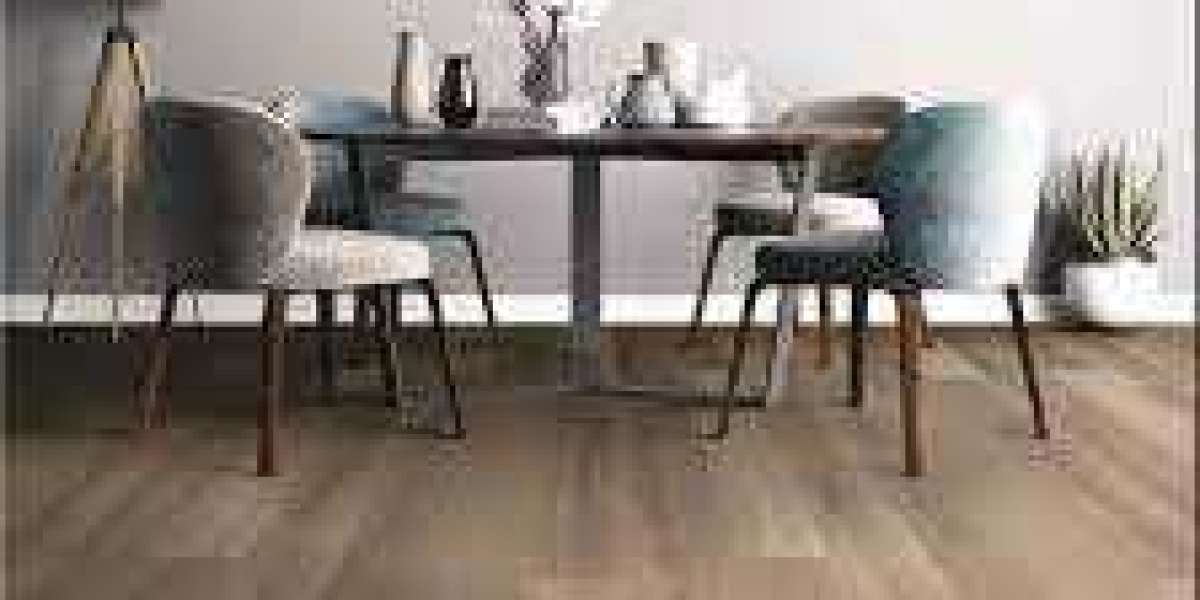SPC flooring is a revolutionary type of flooring that has gained immense popularity in recent years. If you're considering renovating your home or office space, SPC flooring is an option worth exploring. In this comprehensive guide, we'll delve into the world of SPC flooring, discussing its benefits, installation process, maintenance requirements, and more. So, let's dive in and discover everything you need to know about SPC flooring.
1. What is SPC Flooring?
SPC stands for Stone Plastic Composite, which is a type of rigid vinyl flooring. It is composed of a core layer made of limestone powder, polyvinyl chloride, and stabilizers. The core layer is then topped with a printed design layer and a wear layer, providing durability and a realistic look and feel.
SPC flooring is known for its exceptional stability, strength, and resistance to wear and tear. It is a popular choice for both residential and commercial spaces due to its ability to mimic the appearance of natural materials like wood or stone at a fraction of the cost.
2. The Advantages of SPC Flooring
SPC flooring offers numerous advantages over traditional flooring options. Here are some key benefits that make it a preferred choice for many:
- Durability: SPC flooring is highly durable and can withstand heavy foot traffic, making it ideal for busy areas of your home or office.
- Water Resistance: Unlike hardwood or laminate flooring, SPC flooring is waterproof, making it suitable for installation in moisture-prone areas such as kitchens, bathrooms, and basements.
- Easy Maintenance: SPC flooring is easy to clean and maintain. Regular sweeping and occasional mopping are usually sufficient to keep it looking fresh and new.
- Stability: The stone plastic composite core layer gives SPC flooring excellent dimensional stability, reducing the risk of expansion or contraction due to temperature changes.
- Sound Insulation: SPC flooring has built-in sound-absorbing properties, helping to reduce noise levels and create a quieter environment.
- Cost-Effective: SPC flooring provides a cost-effective alternative to natural materials like hardwood or stone, allowing you to achieve the desired aesthetic without breaking the bank.
3. Understanding the Installation Process
Installing SPC flooring is a straightforward process, especially if you have some DIY experience. Here's a step-by-step guide to help you get started:
- Prepare the Subfloor: Ensure that the subfloor is clean, level, and free from any debris. If necessary, make any repairs or adjustments to ensure a smooth surface.
- Acclimate the Flooring: Before installation, allow the SPC flooring to acclimate to the room temperature for at least 48 hours. This will help prevent any expansion or contraction issues later on.
- Install Underlayment: Depending on the condition of your subfloor, you may need to install an underlayment before laying the SPC flooring. Underlayment helps to provide additional cushioning, sound insulation, and moisture protection.
- Begin Installation: Start by laying the first row of SPC planks along one wall, ensuring a ¼-inch expansion gap between the planks and the wall. Use spacers to maintain consistent spacing.
- Cutting and Fitting: Use a utility knife or a saw to cut the planks to the appropriate length for the last row of each section. Remember to leave another ¼-inch expansion gap along the remaining walls.
- Click and Lock: SPC flooring typically comes with a click-and-lock installation system. Connect the planks by inserting the tongue of one plank into the groove of the adjacent plank. Apply firm pressure to ensure a tight fit.
- Continue Installation: Repeat the process, row by row, until you have covered the entire floor area. Use a tapping block and a mallet to secure the planks in place and create a seamless look.
- Trim and Finish: Once the flooring is installed, remove the spacers and trim any excess underlayment or protruding edges. Install baseboards or molding to provide a finished look.
- Allow for Settling: It's important to allow the newly installed SPC flooring to settle for at least 24 hours before subjecting it to heavy foot traffic or moving furniture back into the space.
4. Maintaining Your SPC Flooring
SPC flooring is designed to be low-maintenance, but there are a few simple steps you can take to keep it looking its best:
- Regular Cleaning: Sweep or vacuum the floor regularly to remove dust, dirt, and debris. Use a damp mop or a well-wrung mop with a mild, pH-neutral cleaner to clean any spills or stains.
- Avoid Harsh Chemicals: Avoid using abrasive cleaners, wax, or harsh chemicals on your SPC flooring, as they can damage the wear layer and affect the appearance of the floor.
- Protective Measures: Place doormats at entrances to prevent dirt and moisture from being tracked onto the floor. Use felt pads on the legs of furniture to prevent scratches or dents.
- Avoid Excessive Moisture: Although SPC flooring is waterproof, it's still important to clean up spills promptly and avoid excessive moisture on the surface. Use a dry mop or towel to dry the floor if necessary.
- Take Precautions: While SPC flooring is highly resistant to scratches and wear, it's a good idea to use furniture pads or coasters under heavy furniture or appliances to prevent any potential damage.
- Periodic Maintenance: Depending on the level of foot traffic, you may need to periodically apply a vinyl floor cleaner or polish to maintain the shine and protect the wear layer of your SPC flooring.
5. Frequently Asked Questions (FAQs)
Is SPC flooring suitable for high-traffic areas?
Yes, SPC flooring is an excellent choice for high-traffic areas. Its durable construction and wear-resistant properties make it capable of withstanding heavy foot traffic without showing signs of wear and tear.
Can SPC flooring be installed in wet areas?
Yes, SPC flooring is waterproof and can be installed in wet areas such as kitchens, bathrooms, and basements. Its resistance to moisture makes it a practical and long-lasting flooring option for these spaces.
How long does SPC flooring last?
SPC flooring is known for its exceptional durability and longevity. With proper installation and maintenance, it can last anywhere from 10 to 20 years or more, depending on the quality of the flooring and the level of foot traffic it receives.
Can I install SPC flooring on my own?
Yes, SPC flooring can be installed as a DIY project if you have the necessary skills and tools. The click-and-lock installation system makes it relatively easy to install. However, if you're unsure or don't have prior experience, it's recommended to hire a professional installer to ensure proper installation and a seamless finish.
What is the difference between SPC flooring and other types of vinyl flooring?
SPC flooring and other types of vinyl flooring, such as luxury vinyl tile (LVT) and laminate flooring, differ in their core composition and overall structure. While SPC flooring has a stone plastic composite core layer, LVT typically has a flexible vinyl core, and laminate flooring has a fiberboard core. SPC flooring offers enhanced stability, water resistance, and durability compared to LVT and laminate flooring.
Is SPC flooring eco-friendly?
SPC flooring is considered a more eco-friendly option compared to some other flooring materials. It is typically free from harmful chemicals like formaldehyde and phthalates, making it safer for indoor air quality. Additionally, SPC flooring is often made from recyclable materials and can be recycled at the end of its lifespan, reducing its environmental impact.
Conclusion
SPC flooring is a versatile, durable, and cost-effective flooring option that provides the look and feel of natural materials without the high price tag. Its waterproof properties, ease of installation, and low maintenance requirements make it an excellent choice for both residential and commercial spaces. By following proper installation and maintenance practices, you can enjoy the benefits of SPC flooring for many years to come.
Remember to acclimate the flooring, prepare the subfloor, and use the appropriate tools and techniques during installation. Regular cleaning and protective measures will help preserve the appearance and longevity of your SPC flooring. If you have any further questions or need assistance, consult with a flooring professional for personalized guidance.








